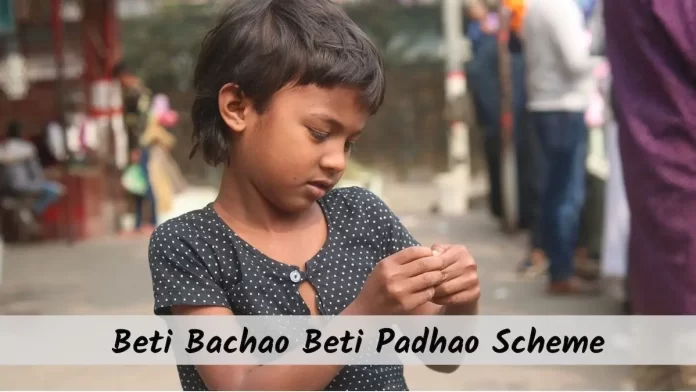India launched the Beti Bachao Beti Padhao (BBBP) scheme in 2015 primarily to address the issue of declining child sex ratio (CSR) in the country and related issues of women and girls over a life cycle continuum.
Background of BBBP Scheme
Census 2011 data was a call for urgent action because it highlighted that the girl child is increasingly being excluded from life itself.
The unabated decline in Child Sex Ratio (CSR) since 1961 (from 976 in 1961 to 927 in 2001 and 918 in 2011) was a matter of grave concern as it reflected the low status of women in our society and indicates her disempowerment over a life-cycle continuum.
Declining CSR is also indicative of pre-birth discrimination manifested through gender-biased sex selection and post-birth discrimination against girls (in terms of health care, nutrition, and educational opportunities).
CSR continued declining in spite of a strong legal and policy framework and various Government initiatives.
The sharp decline is associated with an intersection of various factors such as the increasing spread and misuse of technology for prenatal sex selective elimination, changing aspirations of urban and rural societies, changes in family structures and reproductive decision making, favoring a smaller family size.
This has accentuated the son preference, associated with the low status of women in society, patriarchal social norms, and the disturbing pattern of gender-based violence faced by girls and women across the life cycle.
Read more| Rights of Women in Islam
Despite various policy and programmatic provisions, addressing adverse and steeply declining CSR remains a critical challenge. Efforts are needed to ensure the survival, protection, and education of a girl child to help realize her full potential.
In this regard, the Hon’ble President of India, in his address to the Joint Session of the Parliament on June 9, 2014, had stated that “With a commitment of “Beti Bachao Beti Padhao”, my government will launch a mass campaign for saving the girl child and enabling her education.
Further, the Finance Minister in Budget speech 2014-15 also reiterated the Government of India’s commitment by setting aside Rs. 100 Cr. Hon’ble Prime Minister expressed deep concern over the decline in CSR in his Independence Day address.
In this background, Prime Minister Narendra Modi launched the Beti Bachao Beti Padhao (BBBP) scheme on 22nd January 2015 in Panipat, Haryana to address the issue of decline in CSR and related issues of empowerment of girls and women over a life cycle continuum.
The Scheme was initially launched in 100 districts in 2014-15 (Phase-1) and was expanded to 61 additional districts in 2015-16 (Phase-2).
Following the initial success of the scheme, the initiative has been expanded to 640 districts of the Country (as per Census 2011) on 8th March 2018.
The Overall Goal of the Beti Bachao Beti Padhao (BBBP) Scheme is to celebrate the girl child, enable her education.
Objectives and target Groups
The Scheme is being implemented with a goal to celebrate the girl child and enable her education. The objectives of the Scheme are as under:
- To prevent gender biased sex selective elimination
- To ensure survival and protection of the girl child
- To ensure education and participation of the girl child
Achievement of the BBBP Scheme
The scheme has stirred up collective consciousness towards changing the mindset of the public to acknowledge the rights of the girl child. The scheme has resulted in increased awareness and sensitization of the masses.
It has raised concerns around the issue of declining CSR in India. As a result of the collective consciousness of the people supporting the campaign, BBBP has found its place in public discourse.
- Increase in 19 points in Sex Ratio at Birth at National level from 918 (2014-15) to 937 (2020-21). (Source: HMIS data, MoHFW (April-March, 2014-15 & 2020-21)
- Gross Enrolment Ratio (GER): Enrollment of Girls in secondary education increased from 77.45% in 2014-15 to 81.32% in 2018-19. (Source: U-DISE, Mo Education (2018-19 data is provisional)
- Under Five Child Mortality (Female) has reduced from 45 in 2014 to 36 in 2018. (Source: SRS census india.gov.in)
- Percentage of 1st Trimester ANC Registration has shown improvement from 61% in 2014-15 to 73.9% in 2020-21. (Source: HMIS data, MoHFW (April-March, 2014-15 & 2020-21)
- Percentage of Institutional Deliveries has also shown an improvement from 87% in 2014-15 to 94.8% in 2020-21. (Source: HMIS data, MoHFW (April-March, 2014-15 & 2020-21)
